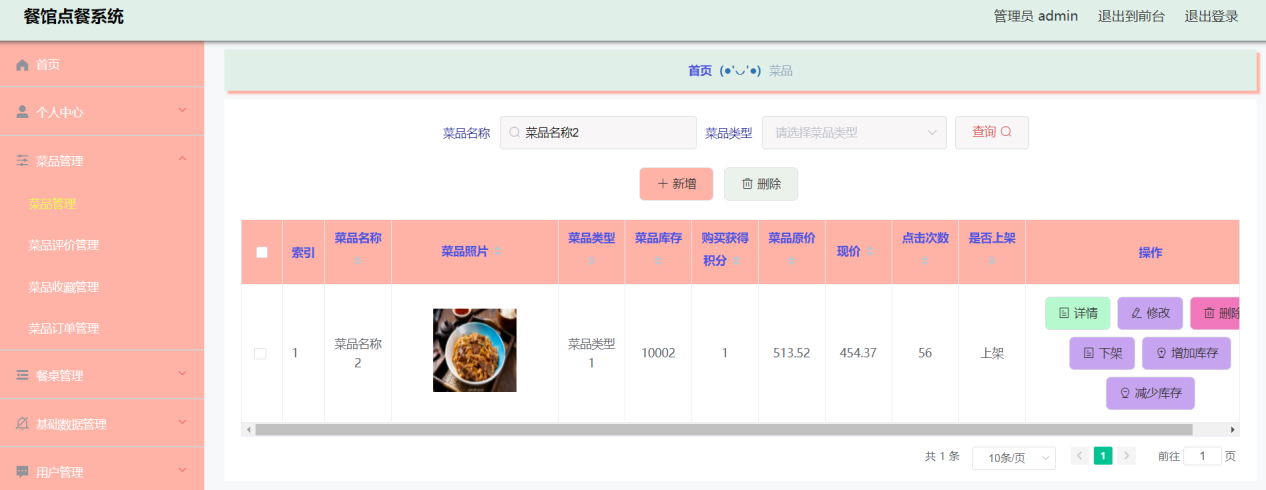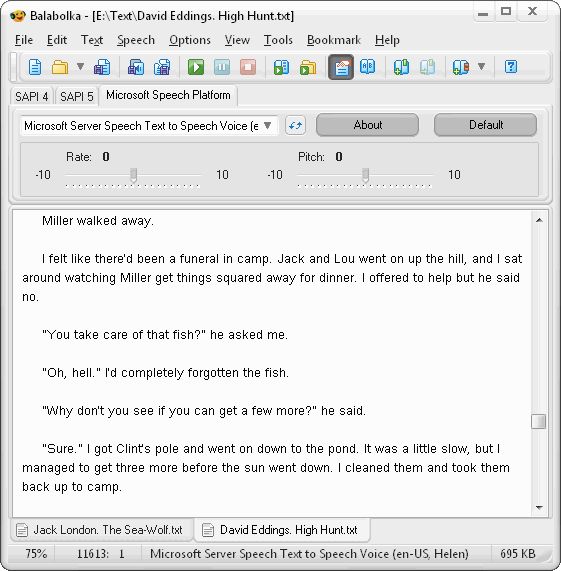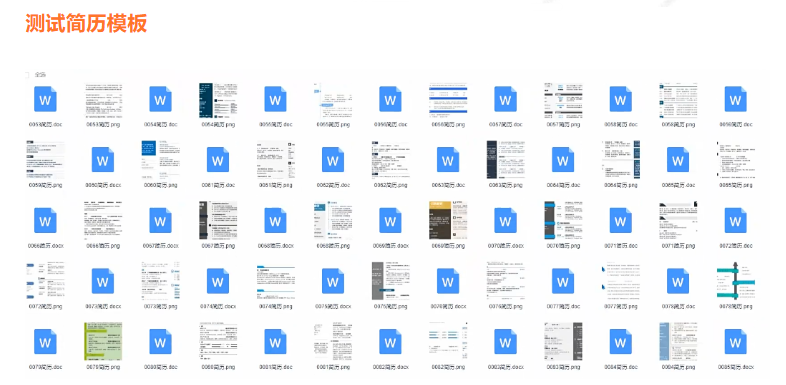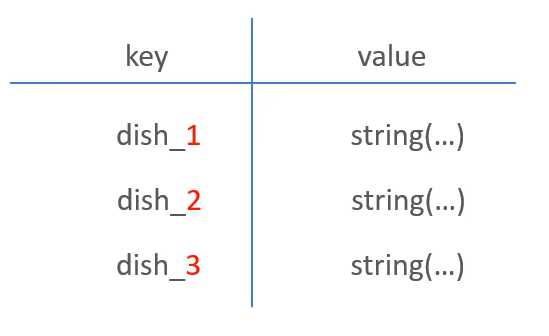YOLO11改进|注意力机制篇|引入HAT超分辨率重建模块

目录
- 一、HAttention注意力机制
- 1.1HAttention注意力介绍
- 1.2HAT核心代码
- 二、添加HAT注意力机制
- 2.1STEP1
- 2.2STEP2
- 2.3STEP3
- 2.4STEP4
- 三、yaml文件与运行
- 3.1yaml文件
- 3.2运行成功截图
一、HAttention注意力机制
1.1HAttention注意力介绍

HAT模型 通过结合卷积特征提取与多尺度注意力机制,具备了强大的图像重建能力。它的优势在于能有效整合局部和全局信息,并通过残差连接和通道注意力等方式提高网络的表达能力和重建质量,适用于图像超分辨率和图像重建任务。
下面是HAT的工作流程和主要模块的作用
- 浅层特征提取 (Shallow Feature Extraction)
输入图像首先经过卷积操作提取低级特征。该过程用来捕捉图像的基础信息,如边缘、颜色等,形成初步的特征图。 - 深层特征提取 (Deep Feature Extraction)
浅层特征通过多个RHAG模块进行深度特征提取。RHAG由多个HAB(混合注意力块)和OCAB(重叠交叉注意力块)组成:
HAB:包含 CAB (Channel Attention Block) 和 (S)W-MSA (Shifted Window Multi-Head Self-Attention) 结构。
CAB (通道注意力块) 使用全局池化和通道注意力机制,专注于不同通道之间的依赖关系,以增强特定通道的特征表示。
(S)W-MSA 是一种窗口划分的自注意力机制,通过窗口化操作计算注意力,减少计算开销,同时增强局部与全局信息的交互。
OCAB:通过交叉注意力机制结合局部和全局特征,并通过重叠区域确保信息的连贯性和连续性。
优势:深度特征提取模块通过多个注意力模块结合局部和全局信息,实现对复杂特征的高效捕捉,同时保持较低的计算成本。 - 图像重建 (Image Reconstruction)
深层特征经过多个RHAG模块后,通过上采样操作重建回高分辨率图像。模型将提取到的深层特征与初始输入进行特征融合,生成更高质量的重建图像。 - 模块优势
RHAG (Residual Hybrid Attention Group):该模块通过残差连接增强网络的梯度流,避免深层网络中的梯度消失问题,同时结合多种注意力机制,提高特征提取的准确性和效率。
HAB (Hybrid Attention Block):该模块将通道注意力与窗口自注意力相结合,在不同尺度上捕捉图像特征。通道注意力增强了各个特征通道的表示能力,而窗口自注意力通过局部和全局上下文的信息交互来提升整体的特征感知能力。
OCAB (Overlapping Cross-Attention Block):通过交叉注意力和重叠区域融合,使模型在捕捉局部特征的同时,能够保持对全局特征的感知,避免信息的割裂。

1.2HAT核心代码
import math
import torch
import torch.nn as nn
from basicsr.utils.registry import ARCH_REGISTRY
from basicsr.archs.arch_util import to_2tuple, trunc_normal_
from einops import rearrangedef drop_path(x, drop_prob: float = 0., training: bool = False):"""Drop paths (Stochastic Depth) per sample (when applied in main path of residual blocks).From: https://github.com/rwightman/pytorch-image-models/blob/master/timm/models/layers/drop.py"""if drop_prob == 0. or not training:return xkeep_prob = 1 - drop_probshape = (x.shape[0], ) + (1, ) * (x.ndim - 1) # work with diff dim tensors, not just 2D ConvNetsrandom_tensor = keep_prob + torch.rand(shape, dtype=x.dtype, device=x.device)random_tensor.floor_() # binarizeoutput = x.div(keep_prob) * random_tensorreturn outputclass DropPath(nn.Module):"""Drop paths (Stochastic Depth) per sample (when applied in main path of residual blocks).From: https://github.com/rwightman/pytorch-image-models/blob/master/timm/models/layers/drop.py"""def __init__(self, drop_prob=None):super(DropPath, self).__init__()self.drop_prob = drop_probdef forward(self, x):return drop_path(x, self.drop_prob, self.training)class ChannelAttention(nn.Module):"""Channel attention used in RCAN.Args:num_feat (int): Channel number of intermediate features.squeeze_factor (int): Channel squeeze factor. Default: 16."""def __init__(self, num_feat, squeeze_factor=16):super(ChannelAttention, self).__init__()self.attention = nn.Sequential(nn.AdaptiveAvgPool2d(1),nn.Conv2d(num_feat, num_feat // squeeze_factor, 1, padding=0),nn.ReLU(inplace=True),nn.Conv2d(num_feat // squeeze_factor, num_feat, 1, padding=0),nn.Sigmoid())def forward(self, x):y = self.attention(x)return x * yclass CAB(nn.Module):def __init__(self, num_feat, compress_ratio=3, squeeze_factor=30):super(CAB, self).__init__()self.cab = nn.Sequential(nn.Conv2d(num_feat, num_feat // compress_ratio, 3, 1, 1),nn.GELU(),nn.Conv2d(num_feat // compress_ratio, num_feat, 3, 1, 1),ChannelAttention(num_feat, squeeze_factor))def forward(self, x):return self.cab(x)class Mlp(nn.Module):def __init__(self, in_features, hidden_features=None, out_features=None, act_layer=nn.GELU, drop=0.):super().__init__()out_features = out_features or in_featureshidden_features = hidden_features or in_featuresself.fc1 = nn.Linear(in_features, hidden_features)self.act = act_layer()self.fc2 = nn.Linear(hidden_features, out_features)self.drop = nn.Dropout(drop)def forward(self, x):x = self.fc1(x)x = self.act(x)x = self.drop(x)x = self.fc2(x)x = self.drop(x)return xdef window_partition(x, window_size):"""Args:x: (b, h, w, c)window_size (int): window sizeReturns:windows: (num_windows*b, window_size, window_size, c)"""b, h, w, c = x.shapex = x.view(b, h // window_size, window_size, w // window_size, window_size, c)windows = x.permute(0, 1, 3, 2, 4, 5).contiguous().view(-1, window_size, window_size, c)return windowsdef window_reverse(windows, window_size, h, w):"""Args:windows: (num_windows*b, window_size, window_size, c)window_size (int): Window sizeh (int): Height of imagew (int): Width of imageReturns:x: (b, h, w, c)"""b = int(windows.shape[0] / (h * w / window_size / window_size))x = windows.view(b, h // window_size, w // window_size, window_size, window_size, -1)x = x.permute(0, 1, 3, 2, 4, 5).contiguous().view(b, h, w, -1)return xclass WindowAttention(nn.Module):r""" Window based multi-head self attention (W-MSA) module with relative position bias.It supports both of shifted and non-shifted window.Args:dim (int): Number of input channels.window_size (tuple[int]): The height and width of the window.num_heads (int): Number of attention heads.qkv_bias (bool, optional): If True, add a learnable bias to query, key, value. Default: Trueqk_scale (float | None, optional): Override default qk scale of head_dim ** -0.5 if setattn_drop (float, optional): Dropout ratio of attention weight. Default: 0.0proj_drop (float, optional): Dropout ratio of output. Default: 0.0"""def __init__(self, dim, window_size, num_heads, qkv_bias=True, qk_scale=None, attn_drop=0., proj_drop=0.):super().__init__()self.dim = dimself.window_size = window_size # Wh, Wwself.num_heads = num_headshead_dim = dim // num_headsself.scale = qk_scale or head_dim**-0.5# define a parameter table of relative position biasself.relative_position_bias_table = nn.Parameter(torch.zeros((2 * window_size[0] - 1) * (2 * window_size[1] - 1), num_heads)) # 2*Wh-1 * 2*Ww-1, nHself.qkv = nn.Linear(dim, dim * 3, bias=qkv_bias)self.attn_drop = nn.Dropout(attn_drop)self.proj = nn.Linear(dim, dim)self.proj_drop = nn.Dropout(proj_drop)trunc_normal_(self.relative_position_bias_table, std=.02)self.softmax = nn.Softmax(dim=-1)def forward(self, x, rpi, mask=None):"""Args:x: input features with shape of (num_windows*b, n, c)mask: (0/-inf) mask with shape of (num_windows, Wh*Ww, Wh*Ww) or None"""b_, n, c = x.shapeqkv = self.qkv(x).reshape(b_, n, 3, self.num_heads, c // self.num_heads).permute(2, 0, 3, 1, 4)q, k, v = qkv[0], qkv[1], qkv[2] # make torchscript happy (cannot use tensor as tuple)q = q * self.scaleattn = (q @ k.transpose(-2, -1))relative_position_bias = self.relative_position_bias_table[rpi.view(-1)].view(self.window_size[0] * self.window_size[1], self.window_size[0] * self.window_size[1], -1) # Wh*Ww,Wh*Ww,nHrelative_position_bias = relative_position_bias.permute(2, 0, 1).contiguous() # nH, Wh*Ww, Wh*Wwattn = attn + relative_position_bias.unsqueeze(0)if mask is not None:nw = mask.shape[0]attn = attn.view(b_ // nw, nw, self.num_heads, n, n) + mask.unsqueeze(1).unsqueeze(0)attn = attn.view(-1, self.num_heads, n, n)attn = self.softmax(attn)else:attn = self.softmax(attn)attn = self.attn_drop(attn)x = (attn @ v).transpose(1, 2).reshape(b_, n, c)x = self.proj(x)x = self.proj_drop(x)return xclass HAB(nn.Module):r""" Hybrid Attention Block.Args:dim (int): Number of input channels.input_resolution (tuple[int]): Input resolution.num_heads (int): Number of attention heads.window_size (int): Window size.shift_size (int): Shift size for SW-MSA.mlp_ratio (float): Ratio of mlp hidden dim to embedding dim.qkv_bias (bool, optional): If True, add a learnable bias to query, key, value. Default: Trueqk_scale (float | None, optional): Override default qk scale of head_dim ** -0.5 if set.drop (float, optional): Dropout rate. Default: 0.0attn_drop (float, optional): Attention dropout rate. Default: 0.0drop_path (float, optional): Stochastic depth rate. Default: 0.0act_layer (nn.Module, optional): Activation layer. Default: nn.GELUnorm_layer (nn.Module, optional): Normalization layer. Default: nn.LayerNorm"""def __init__(self,dim,input_resolution,num_heads,window_size=7,shift_size=0,compress_ratio=3,squeeze_factor=30,conv_scale=0.01,mlp_ratio=4.,qkv_bias=True,qk_scale=None,drop=0.,attn_drop=0.,drop_path=0.,act_layer=nn.GELU,norm_layer=nn.LayerNorm):super().__init__()self.dim = dimself.input_resolution = input_resolutionself.num_heads = num_headsself.window_size = window_sizeself.shift_size = shift_sizeself.mlp_ratio = mlp_ratioif min(self.input_resolution) <= self.window_size:# if window size is larger than input resolution, we don't partition windowsself.shift_size = 0self.window_size = min(self.input_resolution)assert 0 <= self.shift_size < self.window_size, 'shift_size must in 0-window_size'self.norm1 = norm_layer(dim)self.attn = WindowAttention(dim,window_size=to_2tuple(self.window_size),num_heads=num_heads,qkv_bias=qkv_bias,qk_scale=qk_scale,attn_drop=attn_drop,proj_drop=drop)self.conv_scale = conv_scaleself.conv_block = CAB(num_feat=dim, compress_ratio=compress_ratio, squeeze_factor=squeeze_factor)self.drop_path = DropPath(drop_path) if drop_path > 0. else nn.Identity()self.norm2 = norm_layer(dim)mlp_hidden_dim = int(dim * mlp_ratio)self.mlp = Mlp(in_features=dim, hidden_features=mlp_hidden_dim, act_layer=act_layer, drop=drop)def forward(self, x, x_size, rpi_sa, attn_mask):h, w = x_sizeb, _, c = x.shape# assert seq_len == h * w, "input feature has wrong size"shortcut = xx = self.norm1(x)x = x.view(b, h, w, c)# Conv_Xconv_x = self.conv_block(x.permute(0, 3, 1, 2))conv_x = conv_x.permute(0, 2, 3, 1).contiguous().view(b, h * w, c)# cyclic shiftif self.shift_size > 0:shifted_x = torch.roll(x, shifts=(-self.shift_size, -self.shift_size), dims=(1, 2))attn_mask = attn_maskelse:shifted_x = xattn_mask = None# partition windowsx_windows = window_partition(shifted_x, self.window_size) # nw*b, window_size, window_size, cx_windows = x_windows.view(-1, self.window_size * self.window_size, c) # nw*b, window_size*window_size, c# W-MSA/SW-MSA (to be compatible for testing on images whose shapes are the multiple of window sizeattn_windows = self.attn(x_windows, rpi=rpi_sa, mask=attn_mask)# merge windowsattn_windows = attn_windows.view(-1, self.window_size, self.window_size, c)shifted_x = window_reverse(attn_windows, self.window_size, h, w) # b h' w' c# reverse cyclic shiftif self.shift_size > 0:attn_x = torch.roll(shifted_x, shifts=(self.shift_size, self.shift_size), dims=(1, 2))else:attn_x = shifted_xattn_x = attn_x.view(b, h * w, c)# FFNx = shortcut + self.drop_path(attn_x) + conv_x * self.conv_scalex = x + self.drop_path(self.mlp(self.norm2(x)))return xclass PatchMerging(nn.Module):r""" Patch Merging Layer.Args:input_resolution (tuple[int]): Resolution of input feature.dim (int): Number of input channels.norm_layer (nn.Module, optional): Normalization layer. Default: nn.LayerNorm"""def __init__(self, input_resolution, dim, norm_layer=nn.LayerNorm):super().__init__()self.input_resolution = input_resolutionself.dim = dimself.reduction = nn.Linear(4 * dim, 2 * dim, bias=False)self.norm = norm_layer(4 * dim)def forward(self, x):"""x: b, h*w, c"""h, w = self.input_resolutionb, seq_len, c = x.shapeassert seq_len == h * w, 'input feature has wrong size'assert h % 2 == 0 and w % 2 == 0, f'x size ({h}*{w}) are not even.'x = x.view(b, h, w, c)x0 = x[:, 0::2, 0::2, :] # b h/2 w/2 cx1 = x[:, 1::2, 0::2, :] # b h/2 w/2 cx2 = x[:, 0::2, 1::2, :] # b h/2 w/2 cx3 = x[:, 1::2, 1::2, :] # b h/2 w/2 cx = torch.cat([x0, x1, x2, x3], -1) # b h/2 w/2 4*cx = x.view(b, -1, 4 * c) # b h/2*w/2 4*cx = self.norm(x)x = self.reduction(x)return xclass OCAB(nn.Module):# overlapping cross-attention blockdef __init__(self, dim,input_resolution,window_size,overlap_ratio,num_heads,qkv_bias=True,qk_scale=None,mlp_ratio=2,norm_layer=nn.LayerNorm):super().__init__()self.dim = dimself.input_resolution = input_resolutionself.window_size = window_sizeself.num_heads = num_headshead_dim = dim // num_headsself.scale = qk_scale or head_dim**-0.5self.overlap_win_size = int(window_size * overlap_ratio) + window_sizeself.norm1 = norm_layer(dim)self.qkv = nn.Linear(dim, dim * 3, bias=qkv_bias)self.unfold = nn.Unfold(kernel_size=(self.overlap_win_size, self.overlap_win_size), stride=window_size, padding=(self.overlap_win_size-window_size)//2)# define a parameter table of relative position biasself.relative_position_bias_table = nn.Parameter(torch.zeros((window_size + self.overlap_win_size - 1) * (window_size + self.overlap_win_size - 1), num_heads)) # 2*Wh-1 * 2*Ww-1, nHtrunc_normal_(self.relative_position_bias_table, std=.02)self.softmax = nn.Softmax(dim=-1)self.proj = nn.Linear(dim,dim)self.norm2 = norm_layer(dim)mlp_hidden_dim = int(dim * mlp_ratio)self.mlp = Mlp(in_features=dim, hidden_features=mlp_hidden_dim, act_layer=nn.GELU)def forward(self, x, x_size, rpi):h, w = x_sizeb, _, c = x.shapeshortcut = xx = self.norm1(x)x = x.view(b, h, w, c)qkv = self.qkv(x).reshape(b, h, w, 3, c).permute(3, 0, 4, 1, 2) # 3, b, c, h, wq = qkv[0].permute(0, 2, 3, 1) # b, h, w, ckv = torch.cat((qkv[1], qkv[2]), dim=1) # b, 2*c, h, w# partition windowsq_windows = window_partition(q, self.window_size) # nw*b, window_size, window_size, cq_windows = q_windows.view(-1, self.window_size * self.window_size, c) # nw*b, window_size*window_size, ckv_windows = self.unfold(kv) # b, c*w*w, nwkv_windows = rearrange(kv_windows, 'b (nc ch owh oww) nw -> nc (b nw) (owh oww) ch', nc=2, ch=c, owh=self.overlap_win_size, oww=self.overlap_win_size).contiguous() # 2, nw*b, ow*ow, ck_windows, v_windows = kv_windows[0], kv_windows[1] # nw*b, ow*ow, cb_, nq, _ = q_windows.shape_, n, _ = k_windows.shaped = self.dim // self.num_headsq = q_windows.reshape(b_, nq, self.num_heads, d).permute(0, 2, 1, 3) # nw*b, nH, nq, dk = k_windows.reshape(b_, n, self.num_heads, d).permute(0, 2, 1, 3) # nw*b, nH, n, dv = v_windows.reshape(b_, n, self.num_heads, d).permute(0, 2, 1, 3) # nw*b, nH, n, dq = q * self.scaleattn = (q @ k.transpose(-2, -1))relative_position_bias = self.relative_position_bias_table[rpi.view(-1)].view(self.window_size * self.window_size, self.overlap_win_size * self.overlap_win_size, -1) # ws*ws, wse*wse, nHrelative_position_bias = relative_position_bias.permute(2, 0, 1).contiguous() # nH, ws*ws, wse*wseattn = attn + relative_position_bias.unsqueeze(0)attn = self.softmax(attn)attn_windows = (attn @ v).transpose(1, 2).reshape(b_, nq, self.dim)# merge windowsattn_windows = attn_windows.view(-1, self.window_size, self.window_size, self.dim)x = window_reverse(attn_windows, self.window_size, h, w) # b h w cx = x.view(b, h * w, self.dim)x = self.proj(x) + shortcutx = x + self.mlp(self.norm2(x))return xclass AttenBlocks(nn.Module):""" A series of attention blocks for one RHAG.Args:dim (int): Number of input channels.input_resolution (tuple[int]): Input resolution.depth (int): Number of blocks.num_heads (int): Number of attention heads.window_size (int): Local window size.mlp_ratio (float): Ratio of mlp hidden dim to embedding dim.qkv_bias (bool, optional): If True, add a learnable bias to query, key, value. Default: Trueqk_scale (float | None, optional): Override default qk scale of head_dim ** -0.5 if set.drop (float, optional): Dropout rate. Default: 0.0attn_drop (float, optional): Attention dropout rate. Default: 0.0drop_path (float | tuple[float], optional): Stochastic depth rate. Default: 0.0norm_layer (nn.Module, optional): Normalization layer. Default: nn.LayerNormdownsample (nn.Module | None, optional): Downsample layer at the end of the layer. Default: Noneuse_checkpoint (bool): Whether to use checkpointing to save memory. Default: False."""def __init__(self,dim,input_resolution,depth,num_heads,window_size,compress_ratio,squeeze_factor,conv_scale,overlap_ratio,mlp_ratio=4.,qkv_bias=True,qk_scale=None,drop=0.,attn_drop=0.,drop_path=0.,norm_layer=nn.LayerNorm,downsample=None,use_checkpoint=False):super().__init__()self.dim = dimself.input_resolution = input_resolutionself.depth = depthself.use_checkpoint = use_checkpoint# build blocksself.blocks = nn.ModuleList([HAB(dim=dim,input_resolution=input_resolution,num_heads=num_heads,window_size=window_size,shift_size=0 if (i % 2 == 0) else window_size // 2,compress_ratio=compress_ratio,squeeze_factor=squeeze_factor,conv_scale=conv_scale,mlp_ratio=mlp_ratio,qkv_bias=qkv_bias,qk_scale=qk_scale,drop=drop,attn_drop=attn_drop,drop_path=drop_path[i] if isinstance(drop_path, list) else drop_path,norm_layer=norm_layer) for i in range(depth)])# OCABself.overlap_attn = OCAB(dim=dim,input_resolution=input_resolution,window_size=window_size,overlap_ratio=overlap_ratio,num_heads=num_heads,qkv_bias=qkv_bias,qk_scale=qk_scale,mlp_ratio=mlp_ratio,norm_layer=norm_layer)# patch merging layerif downsample is not None:self.downsample = downsample(input_resolution, dim=dim, norm_layer=norm_layer)else:self.downsample = Nonedef forward(self, x, x_size, params):for blk in self.blocks:x = blk(x, x_size, params['rpi_sa'], params['attn_mask'])x = self.overlap_attn(x, x_size, params['rpi_oca'])if self.downsample is not None:x = self.downsample(x)return xclass RHAG(nn.Module):"""Residual Hybrid Attention Group (RHAG).Args:dim (int): Number of input channels.input_resolution (tuple[int]): Input resolution.depth (int): Number of blocks.num_heads (int): Number of attention heads.window_size (int): Local window size.mlp_ratio (float): Ratio of mlp hidden dim to embedding dim.qkv_bias (bool, optional): If True, add a learnable bias to query, key, value. Default: Trueqk_scale (float | None, optional): Override default qk scale of head_dim ** -0.5 if set.drop (float, optional): Dropout rate. Default: 0.0attn_drop (float, optional): Attention dropout rate. Default: 0.0drop_path (float | tuple[float], optional): Stochastic depth rate. Default: 0.0norm_layer (nn.Module, optional): Normalization layer. Default: nn.LayerNormdownsample (nn.Module | None, optional): Downsample layer at the end of the layer. Default: Noneuse_checkpoint (bool): Whether to use checkpointing to save memory. Default: False.img_size: Input image size.patch_size: Patch size.resi_connection: The convolutional block before residual connection."""def __init__(self,dim,input_resolution,depth,num_heads,window_size,compress_ratio,squeeze_factor,conv_scale,overlap_ratio,mlp_ratio=4.,qkv_bias=True,qk_scale=None,drop=0.,attn_drop=0.,drop_path=0.,norm_layer=nn.LayerNorm,downsample=None,use_checkpoint=False,img_size=224,patch_size=4,resi_connection='1conv'):super(RHAG, self).__init__()self.dim = dimself.input_resolution = input_resolutionself.residual_group = AttenBlocks(dim=dim,input_resolution=input_resolution,depth=depth,num_heads=num_heads,window_size=window_size,compress_ratio=compress_ratio,squeeze_factor=squeeze_factor,conv_scale=conv_scale,overlap_ratio=overlap_ratio,mlp_ratio=mlp_ratio,qkv_bias=qkv_bias,qk_scale=qk_scale,drop=drop,attn_drop=attn_drop,drop_path=drop_path,norm_layer=norm_layer,downsample=downsample,use_checkpoint=use_checkpoint)if resi_connection == '1conv':self.conv = nn.Conv2d(dim, dim, 3, 1, 1)elif resi_connection == 'identity':self.conv = nn.Identity()self.patch_embed = PatchEmbed(img_size=img_size, patch_size=patch_size, in_chans=0, embed_dim=dim, norm_layer=None)self.patch_unembed = PatchUnEmbed(img_size=img_size, patch_size=patch_size, in_chans=0, embed_dim=dim, norm_layer=None)def forward(self, x, x_size, params):return self.patch_embed(self.conv(self.patch_unembed(self.residual_group(x, x_size, params), x_size))) + xclass PatchEmbed(nn.Module):r""" Image to Patch EmbeddingArgs:img_size (int): Image size. Default: 224.patch_size (int): Patch token size. Default: 4.in_chans (int): Number of input image channels. Default: 3.embed_dim (int): Number of linear projection output channels. Default: 96.norm_layer (nn.Module, optional): Normalization layer. Default: None"""def __init__(self, img_size=224, patch_size=4, in_chans=3, embed_dim=96, norm_layer=None):super().__init__()img_size = to_2tuple(img_size)patch_size = to_2tuple(patch_size)patches_resolution = [img_size[0] // patch_size[0], img_size[1] // patch_size[1]]self.img_size = img_sizeself.patch_size = patch_sizeself.patches_resolution = patches_resolutionself.num_patches = patches_resolution[0] * patches_resolution[1]self.in_chans = in_chansself.embed_dim = embed_dimif norm_layer is not None:self.norm = norm_layer(embed_dim)else:self.norm = Nonedef forward(self, x):x = x.flatten(2).transpose(1, 2) # b Ph*Pw cif self.norm is not None:x = self.norm(x)return xclass PatchUnEmbed(nn.Module):r""" Image to Patch UnembeddingArgs:img_size (int): Image size. Default: 224.patch_size (int): Patch token size. Default: 4.in_chans (int): Number of input image channels. Default: 3.embed_dim (int): Number of linear projection output channels. Default: 96.norm_layer (nn.Module, optional): Normalization layer. Default: None"""def __init__(self, img_size=224, patch_size=4, in_chans=3, embed_dim=96, norm_layer=None):super().__init__()img_size = to_2tuple(img_size)patch_size = to_2tuple(patch_size)patches_resolution = [img_size[0] // patch_size[0], img_size[1] // patch_size[1]]self.img_size = img_sizeself.patch_size = patch_sizeself.patches_resolution = patches_resolutionself.num_patches = patches_resolution[0] * patches_resolution[1]self.in_chans = in_chansself.embed_dim = embed_dimdef forward(self, x, x_size):x = x.transpose(1, 2).contiguous().view(x.shape[0], self.embed_dim, x_size[0], x_size[1]) # b Ph*Pw creturn xclass Upsample(nn.Sequential):"""Upsample module.Args:scale (int): Scale factor. Supported scales: 2^n and 3.num_feat (int): Channel number of intermediate features."""def __init__(self, scale, num_feat):m = []if (scale & (scale - 1)) == 0: # scale = 2^nfor _ in range(int(math.log(scale, 2))):m.append(nn.Conv2d(num_feat, 4 * num_feat, 3, 1, 1))m.append(nn.PixelShuffle(2))elif scale == 3:m.append(nn.Conv2d(num_feat, 9 * num_feat, 3, 1, 1))m.append(nn.PixelShuffle(3))else:raise ValueError(f'scale {scale} is not supported. ' 'Supported scales: 2^n and 3.')super(Upsample, self).__init__(*m)@ARCH_REGISTRY.register()
class HAT(nn.Module):r""" Hybrid Attention TransformerA PyTorch implementation of : `Activating More Pixels in Image Super-Resolution Transformer`.Some codes are based on SwinIR.Args:img_size (int | tuple(int)): Input image size. Default 64patch_size (int | tuple(int)): Patch size. Default: 1in_chans (int): Number of input image channels. Default: 3embed_dim (int): Patch embedding dimension. Default: 96depths (tuple(int)): Depth of each Swin Transformer layer.num_heads (tuple(int)): Number of attention heads in different layers.window_size (int): Window size. Default: 7mlp_ratio (float): Ratio of mlp hidden dim to embedding dim. Default: 4qkv_bias (bool): If True, add a learnable bias to query, key, value. Default: Trueqk_scale (float): Override default qk scale of head_dim ** -0.5 if set. Default: Nonedrop_rate (float): Dropout rate. Default: 0attn_drop_rate (float): Attention dropout rate. Default: 0drop_path_rate (float): Stochastic depth rate. Default: 0.1norm_layer (nn.Module): Normalization layer. Default: nn.LayerNorm.ape (bool): If True, add absolute position embedding to the patch embedding. Default: Falsepatch_norm (bool): If True, add normalization after patch embedding. Default: Trueuse_checkpoint (bool): Whether to use checkpointing to save memory. Default: Falseupscale: Upscale factor. 2/3/4/8 for image SR, 1 for denoising and compress artifact reductionimg_range: Image range. 1. or 255.upsampler: The reconstruction reconstruction module. 'pixelshuffle'/'pixelshuffledirect'/'nearest+conv'/Noneresi_connection: The convolutional block before residual connection. '1conv'/'3conv'"""def __init__(self,in_chans=3,img_size=64,patch_size=1,embed_dim=96,depths=(6, 6, 6, 6),num_heads=(6, 6, 6, 6),window_size=7,compress_ratio=3,squeeze_factor=30,conv_scale=0.01,overlap_ratio=0.5,mlp_ratio=4.,qkv_bias=True,qk_scale=None,drop_rate=0.,attn_drop_rate=0.,drop_path_rate=0.1,norm_layer=nn.LayerNorm,ape=False,patch_norm=True,use_checkpoint=False,upscale=2,img_range=1.,upsampler='',resi_connection='1conv',**kwargs):super(HAT, self).__init__()self.window_size = window_sizeself.shift_size = window_size // 2self.overlap_ratio = overlap_rationum_in_ch = in_chansnum_out_ch = in_chansnum_feat = 64self.img_range = img_rangeif in_chans == 3:rgb_mean = (0.4488, 0.4371, 0.4040)self.mean = torch.Tensor(rgb_mean).view(1, 3, 1, 1)else:self.mean = torch.zeros(1, 1, 1, 1)self.upscale = upscaleself.upsampler = upsampler# relative position indexrelative_position_index_SA = self.calculate_rpi_sa()relative_position_index_OCA = self.calculate_rpi_oca()self.register_buffer('relative_position_index_SA', relative_position_index_SA)self.register_buffer('relative_position_index_OCA', relative_position_index_OCA)# ------------------------- 1, shallow feature extraction ------------------------- #self.conv_first = nn.Conv2d(num_in_ch, embed_dim, 3, 1, 1)# ------------------------- 2, deep feature extraction ------------------------- #self.num_layers = len(depths)self.embed_dim = embed_dimself.ape = apeself.patch_norm = patch_normself.num_features = embed_dimself.mlp_ratio = mlp_ratio# split image into non-overlapping patchesself.patch_embed = PatchEmbed(img_size=img_size,patch_size=patch_size,in_chans=embed_dim,embed_dim=embed_dim,norm_layer=norm_layer if self.patch_norm else None)num_patches = self.patch_embed.num_patchespatches_resolution = self.patch_embed.patches_resolutionself.patches_resolution = patches_resolution# merge non-overlapping patches into imageself.patch_unembed = PatchUnEmbed(img_size=img_size,patch_size=patch_size,in_chans=embed_dim,embed_dim=embed_dim,norm_layer=norm_layer if self.patch_norm else None)# absolute position embeddingif self.ape:self.absolute_pos_embed = nn.Parameter(torch.zeros(1, num_patches, embed_dim))trunc_normal_(self.absolute_pos_embed, std=.02)self.pos_drop = nn.Dropout(p=drop_rate)# stochastic depthdpr = [x.item() for x in torch.linspace(0, drop_path_rate, sum(depths))] # stochastic depth decay rule# build Residual Hybrid Attention Groups (RHAG)self.layers = nn.ModuleList()for i_layer in range(self.num_layers):layer = RHAG(dim=embed_dim,input_resolution=(patches_resolution[0], patches_resolution[1]),depth=depths[i_layer],num_heads=num_heads[i_layer],window_size=window_size,compress_ratio=compress_ratio,squeeze_factor=squeeze_factor,conv_scale=conv_scale,overlap_ratio=overlap_ratio,mlp_ratio=self.mlp_ratio,qkv_bias=qkv_bias,qk_scale=qk_scale,drop=drop_rate,attn_drop=attn_drop_rate,drop_path=dpr[sum(depths[:i_layer]):sum(depths[:i_layer + 1])], # no impact on SR resultsnorm_layer=norm_layer,downsample=None,use_checkpoint=use_checkpoint,img_size=img_size,patch_size=patch_size,resi_connection=resi_connection)self.layers.append(layer)self.norm = norm_layer(self.num_features)# build the last conv layer in deep feature extractionif resi_connection == '1conv':self.conv_after_body = nn.Conv2d(embed_dim, embed_dim, 3, 1, 1)elif resi_connection == 'identity':self.conv_after_body = nn.Identity()# ------------------------- 3, high quality image reconstruction ------------------------- #if self.upsampler == 'pixelshuffle':# for classical SRself.conv_before_upsample = nn.Sequential(nn.Conv2d(embed_dim, num_feat, 3, 1, 1), nn.LeakyReLU(inplace=True))self.upsample = Upsample(upscale, num_feat)self.conv_last = nn.Conv2d(num_feat, num_out_ch, 3, 1, 1)self.apply(self._init_weights)def _init_weights(self, m):if isinstance(m, nn.Linear):trunc_normal_(m.weight, std=.02)if isinstance(m, nn.Linear) and m.bias is not None:nn.init.constant_(m.bias, 0)elif isinstance(m, nn.LayerNorm):nn.init.constant_(m.bias, 0)nn.init.constant_(m.weight, 1.0)def calculate_rpi_sa(self):# calculate relative position index for SAcoords_h = torch.arange(self.window_size)coords_w = torch.arange(self.window_size)coords = torch.stack(torch.meshgrid([coords_h, coords_w])) # 2, Wh, Wwcoords_flatten = torch.flatten(coords, 1) # 2, Wh*Wwrelative_coords = coords_flatten[:, :, None] - coords_flatten[:, None, :] # 2, Wh*Ww, Wh*Wwrelative_coords = relative_coords.permute(1, 2, 0).contiguous() # Wh*Ww, Wh*Ww, 2relative_coords[:, :, 0] += self.window_size - 1 # shift to start from 0relative_coords[:, :, 1] += self.window_size - 1relative_coords[:, :, 0] *= 2 * self.window_size - 1relative_position_index = relative_coords.sum(-1) # Wh*Ww, Wh*Wwreturn relative_position_indexdef calculate_rpi_oca(self):# calculate relative position index for OCAwindow_size_ori = self.window_sizewindow_size_ext = self.window_size + int(self.overlap_ratio * self.window_size)coords_h = torch.arange(window_size_ori)coords_w = torch.arange(window_size_ori)coords_ori = torch.stack(torch.meshgrid([coords_h, coords_w])) # 2, ws, wscoords_ori_flatten = torch.flatten(coords_ori, 1) # 2, ws*wscoords_h = torch.arange(window_size_ext)coords_w = torch.arange(window_size_ext)coords_ext = torch.stack(torch.meshgrid([coords_h, coords_w])) # 2, wse, wsecoords_ext_flatten = torch.flatten(coords_ext, 1) # 2, wse*wserelative_coords = coords_ext_flatten[:, None, :] - coords_ori_flatten[:, :, None] # 2, ws*ws, wse*wserelative_coords = relative_coords.permute(1, 2, 0).contiguous() # ws*ws, wse*wse, 2relative_coords[:, :, 0] += window_size_ori - window_size_ext + 1 # shift to start from 0relative_coords[:, :, 1] += window_size_ori - window_size_ext + 1relative_coords[:, :, 0] *= window_size_ori + window_size_ext - 1relative_position_index = relative_coords.sum(-1)return relative_position_indexdef calculate_mask(self, x_size):# calculate attention mask for SW-MSAh, w = x_sizeimg_mask = torch.zeros((1, h, w, 1)) # 1 h w 1h_slices = (slice(0, -self.window_size), slice(-self.window_size,-self.shift_size), slice(-self.shift_size, None))w_slices = (slice(0, -self.window_size), slice(-self.window_size,-self.shift_size), slice(-self.shift_size, None))cnt = 0for h in h_slices:for w in w_slices:img_mask[:, h, w, :] = cntcnt += 1mask_windows = window_partition(img_mask, self.window_size) # nw, window_size, window_size, 1mask_windows = mask_windows.view(-1, self.window_size * self.window_size)attn_mask = mask_windows.unsqueeze(1) - mask_windows.unsqueeze(2)attn_mask = attn_mask.masked_fill(attn_mask != 0, float(-100.0)).masked_fill(attn_mask == 0, float(0.0))return attn_mask@torch.jit.ignoredef no_weight_decay(self):return {'absolute_pos_embed'}@torch.jit.ignoredef no_weight_decay_keywords(self):return {'relative_position_bias_table'}def forward_features(self, x):x_size = (x.shape[2], x.shape[3])# Calculate attention mask and relative position index in advance to speed up inference.# The original code is very time-consuming for large window size.attn_mask = self.calculate_mask(x_size).to(x.device)params = {'attn_mask': attn_mask, 'rpi_sa': self.relative_position_index_SA, 'rpi_oca': self.relative_position_index_OCA}x = self.patch_embed(x)if self.ape:x = x + self.absolute_pos_embedx = self.pos_drop(x)for layer in self.layers:x = layer(x, x_size, params)x = self.norm(x) # b seq_len cx = self.patch_unembed(x, x_size)return xdef forward(self, x):self.mean = self.mean.type_as(x)x = (x - self.mean) * self.img_rangeif self.upsampler == 'pixelshuffle':# for classical SRx = self.conv_first(x)x = self.conv_after_body(self.forward_features(x)) + xx = self.conv_before_upsample(x)x = self.conv_last(self.upsample(x))x = x / self.img_range + self.meanreturn x
二、添加HAT注意力机制
2.1STEP1
首先找到ultralytics/nn文件路径下新建一个Add-module的python文件包【这里注意一定是python文件包,新建后会自动生成_init_.py】,如果已经跟着我的教程建立过一次了可以省略此步骤,随后新建一个HAT.py文件并将上文中提到的注意力机制的代码全部粘贴到此文件中,如下图所示
2.2STEP2
在STEP1中新建的_init_.py文件中导入增加改进模块的代码包如下图所示
2.3STEP3
找到ultralytics/nn文件夹中的task.py文件,在其中按照下图添加
2.4STEP4
定位到ultralytics/nn文件夹中的task.py文件中的def parse_model(d, ch, verbose=True): # model_dict, input_channels(3)函数添加如图代码,【如果不好定位可以直接ctrl+f搜索定位】

三、yaml文件与运行
3.1yaml文件
以下是添加HAT注意力机制在Backbone中的yaml文件,大家可以注释自行调节,效果以自己的数据集结果为准
# Ultralytics YOLO 🚀, AGPL-3.0 license
# YOLO11 object detection model with P3-P5 outputs. For Usage examples see https://docs.ultralytics.com/tasks/detect# Parameters
nc: 80 # number of classes
scales: # model compound scaling constants, i.e. 'model=yolo11n.yaml' will call yolo11.yaml with scale 'n'# [depth, width, max_channels]n: [0.50, 0.25, 1024] # summary: 319 layers, 2624080 parameters, 2624064 gradients, 6.6 GFLOPss: [0.50, 0.50, 1024] # summary: 319 layers, 9458752 parameters, 9458736 gradients, 21.7 GFLOPsm: [0.50, 1.00, 512] # summary: 409 layers, 20114688 parameters, 20114672 gradients, 68.5 GFLOPsl: [1.00, 1.00, 512] # summary: 631 layers, 25372160 parameters, 25372144 gradients, 87.6 GFLOPsx: [1.00, 1.50, 512] # summary: 631 layers, 56966176 parameters, 56966160 gradients, 196.0 GFLOPs# YOLO11n backbone
backbone:# [from, repeats, module, args]- [-1, 1, Conv, [64, 3, 2]] # 0-P1/2- [-1, 1, Conv, [128, 3, 2]] # 1-P2/4- [-1, 2, C3k2, [256, False, 0.25]]- [-1, 1, Conv, [256, 3, 2]] # 3-P3/8- [-1, 2, C3k2, [512, False, 0.25]]- [-1, 1, Conv, [512, 3, 2]] # 5-P4/16- [-1, 2, C3k2, [512, True]]- [-1, 1, Conv, [1024, 3, 2]] # 7-P5/32- [-1, 2, C3k2, [1024, True]]- [-1, 1, HAT, []]- [-1, 1, SPPF, [1024, 5]] # 9- [-1, 2, C2PSA, [1024]] # 10# YOLO11n head
head:- [-1, 1, nn.Upsample, [None, 2, "nearest"]]- [[-1, 6], 1, Concat, [1]] # cat backbone P4- [-1, 2, C3k2, [512, False]] # 13- [-1, 1, nn.Upsample, [None, 2, "nearest"]]- [[-1, 4], 1, Concat, [1]] # cat backbone P3- [-1, 2, C3k2, [256, False]] # 16 (P3/8-small)- [-1, 1, Conv, [256, 3, 2]]- [[-1, 14], 1, Concat, [1]] # cat head P4- [-1, 2, C3k2, [512, False]] # 19 (P4/16-medium)- [-1, 1, Conv, [512, 3, 2]]- [[-1, 11], 1, Concat, [1]] # cat head P5- [-1, 2, C3k2, [1024, True]] # 22 (P5/32-large)- [[17, 20, 23], 1, Detect, [nc]] # Detect(P3, P4, P5)以上添加位置仅供参考,具体添加位置以及模块效果以自己的数据集结果为准
3.2运行成功截图

OK 以上就是添加HAT注意力机制的全部过程了,后续将持续更新尽情期待

相关文章:

YOLO11改进|注意力机制篇|引入HAT超分辨率重建模块
目录 一、HAttention注意力机制1.1HAttention注意力介绍1.2HAT核心代码 二、添加HAT注意力机制2.1STEP12.2STEP22.3STEP32.4STEP4 三、yaml文件与运行3.1yaml文件3.2运行成功截图 一、HAttention注意力机制 1.1HAttention注意力介绍 HAT模型 通过结合卷积特征提取与多尺度注意…...

老牛也想吃嫩草,思科为何巨资投入云初创CoreWeave?
【科技明说 | 科技热点关注】 当我看到前些天思科(Cisco)的新闻时笑了。业内朋友对我说,老牛也想吃嫩草,人之常情尔,都是为了好好活着。 作为全球著名的网络产品巨头,思科Cisco论是遭遇到何种市场与行业巨变ÿ…...

Spring Boot 事务管理入门
在 Spring Boot 应用中,事务管理是一个至关重要的方面,它确保了数据的一致性和完整性。本文将深入探讨 Spring Boot 中事务管理的机制、使用方法以及注意事项,并提供丰富的示例代码。 其它教程: mysql事务详解 一、事务基础概念…...

20年408数据结构
第一题: 解析:这种题可以先画个草图分析一下,一下就看出来了。 这里的m(7,2)对应的是这图里的m(2,7),第一列存1个元素,第二列存2个元素,第三列存3个元素,第四列存4个元素,第五列存5个元素&#…...

4反馈、LC、石英、RC振荡器
1什么是振荡器? 我们看看振荡器在无线通信中扮演什么角色? 1)无线通信的波是指电磁波。 2)电磁波的频率高于100KHz才能在空气中传播。 3)空气中的高频电磁波的相位和振幅可以排列组合包含信息。 4)无…...

go 的 timer reset
在 Go 语言 1.23 版本之前,与Timer(定时器)关联的通道是异步的(有缓冲,容量为 1)。这意味着即使在调用Timer.Stop(停止定时器)或Timer.Reset(重置定时器)并返…...

每日一面 day03
Q:介绍一下MySQL的三种日志(redo,undo,bin) Redo Log 和 Undo Log 是存储引擎 InnoDB 层面实现的,Bin Log 是 MySQL 层面实现的。 下面是三种日志的简要介绍: Redo Log:保证事务的…...

ssm基于SSM框架的餐馆点餐系统的设计+VUE
系统包含:源码论文 所用技术:SpringBootVueSSMMybatisMysql 免费提供给大家参考或者学习,获取源码请私聊我 需要定制请私聊 目 录 摘要 I Abstract II 1绪论 1 1.1研究背景与意义 1 1.1.1研究背景 1 1.1.2研究意义 1 1.2国内外研究…...

多人播报配音怎么弄?简单4招分享
想象一下,你手中的小说突然间活了起来,每个角色都有了自己的声音和情感。 这就是多人配音的魅力所在。它让文字跃然纸上,赋予了故事新的生命。 那么,如何制作一部引人入胜的小说呢?多人配音怎么制作的呢?…...

《Windows PE》4.1导入表
导入表顾名思义,就是记录外部导入函数信息的表。这些信息包括外部导入函数的序号、名称、地址和所属的DLL动态链接库的名称。Windows程序中使用的所有API接口函数都是从系统DLL中调用的。当然也可能是自定义的DLL动态链接库。对于调用方,我们称之为导入函…...

计算机专业大学生应该如何规划大学四年?
计算机专业的大学生在学习过程中应该注重以下几个方面,以确保他们在快速变化的技术领域中保持竞争力: 基础知识: 数学基础:离散数学、线性代数、概率论等数学课程对于理解算法和数据结构至关重要。编程基础:学习至少一…...

R知识图谱1—tidyverse玩转数据处理120题
以下是本人依据张老师提供的tidyverse题库自行刷题后的tidyverse Rmd文件,部分解法参考张老师提示,部分解法我本人灵感提供 数据下载来源https://github.com/zhjx19/tidyverse120/tree/main/data 参考https://github.com/MaybeBio/R_cheatsheet/tree/mai…...

【赵渝强老师】K8s中的有状态控制器StatefulSet
在K8s中,StatefulSets将Pod部署成有状态的应用程序。通过使用StatefulSets控制器,可以为Pod提供持久存储和持久的唯一性标识符。StatefulSets控制器与Deployment控制器不同的是,StatefulSets控制器为管理的Pod维护了一个有粘性的标识符。无论…...

机器学习笔记(持续更新)
使用matplotlib绘图: import matplotlib.pyplot as plt fig, axplt.subplots() #创建一个图形窗口 plt.show() #不绘制任何内容,直接显示空图 重复值处理: 重复值处理代码: import pandas as pd data pd.DataFrame({学号: [1…...

Nginx 配置之server块
在 Nginx 配置中使用两个 server 块是为了处理 HTTP 和 HTTPS 请求的不同需求。具体来说: 第一个 server 块: 监听 80 端口(HTTP)。将所有 HTTP 请求重定向到 HTTPS(443 端口)。 第二个 server 块ÿ…...

魅族Lucky 08惊艳亮相:极窄四等边设计引领美学新风尚
在这个智能手机设计趋于同质化的时代,魅族以其独特的设计理念和创新技术,再次为市场带来了一股清新之风。 近日,魅族全新力作——Lucky 08手机正式曝光,其独特的“极窄物理四等边”设计瞬间吸引了众多消费者的目光,而…...

自动化的抖音
文件命名 main.js var uiModule require("ui_module.js"); if (!auto.service) {toast("请开启无障碍服务");auto.waitFor();} var isRunning true; var swipeCount 0; var targetSwipeCount random(1, 10); var window uiModule.createUI(); uiMo…...

无人机之巡航控制篇
一、巡航控制的基本原理 无人机巡航控制的基本原理是通过传感器检测无人机的飞行状态和环境信息,并将其反馈给控制器。控制器根据反馈信息和任务需求,计算出无人机的控制指令,并将其发送给执行机构。执行机构根据控制器的控制指令,…...

面试必问的7大测试分类!一文说清楚!
在日常测试工作中,我们经常会听到“单元测试,集成测试,系统测试”之类的词汇,大家都知道这是按照开发阶段进行测试活动的划分。 这种划分完整的分类,其实是分为四种“单元测试,集成测试,系统测…...

深信服上网行为管理AC无法注销在线用户
下图用户认证成功后无法注销 很多入网的用户都是使用的这个账号 针对单个IP强制注销也不生效 解决步骤: 接入管理-用户管理-用户绑定管理-用户绑定 删除绑定免认证的配置 删除后所有用户会强制注销掉,重新登录即可 可添加主页联系方式帮忙远程解决问…...

【SpringBoot】100、SpringBoot中使用自定义注解+AOP实现参数自动解密
在实际项目中,用户注册、登录、修改密码等操作,都涉及到参数传输安全问题。所以我们需要在前端对账户、密码等敏感信息加密传输,在后端接收到数据后能自动解密。 1、引入依赖 <dependency><groupId>org.springframework.boot</groupId><artifactId...

2021-03-15 iview一些问题
1.iview 在使用tree组件时,发现没有set类的方法,只有get,那么要改变tree值,只能遍历treeData,递归修改treeData的checked,发现无法更改,原因在于check模式下,子元素的勾选状态跟父节…...

镜像里切换为普通用户
如果你登录远程虚拟机默认就是 root 用户,但你不希望用 root 权限运行 ns-3(这是对的,ns3 工具会拒绝 root),你可以按以下方法创建一个 非 root 用户账号 并切换到它运行 ns-3。 一次性解决方案:创建非 roo…...

苍穹外卖--缓存菜品
1.问题说明 用户端小程序展示的菜品数据都是通过查询数据库获得,如果用户端访问量比较大,数据库访问压力随之增大 2.实现思路 通过Redis来缓存菜品数据,减少数据库查询操作。 缓存逻辑分析: ①每个分类下的菜品保持一份缓存数据…...

【配置 YOLOX 用于按目录分类的图片数据集】
现在的图标点选越来越多,如何一步解决,采用 YOLOX 目标检测模式则可以轻松解决 要在 YOLOX 中使用按目录分类的图片数据集(每个目录代表一个类别,目录下是该类别的所有图片),你需要进行以下配置步骤&#x…...

工业自动化时代的精准装配革新:迁移科技3D视觉系统如何重塑机器人定位装配
AI3D视觉的工业赋能者 迁移科技成立于2017年,作为行业领先的3D工业相机及视觉系统供应商,累计完成数亿元融资。其核心技术覆盖硬件设计、算法优化及软件集成,通过稳定、易用、高回报的AI3D视觉系统,为汽车、新能源、金属制造等行…...

3403. 从盒子中找出字典序最大的字符串 I
3403. 从盒子中找出字典序最大的字符串 I 题目链接:3403. 从盒子中找出字典序最大的字符串 I 代码如下: class Solution { public:string answerString(string word, int numFriends) {if (numFriends 1) {return word;}string res;for (int i 0;i &…...

浅谈不同二分算法的查找情况
二分算法原理比较简单,但是实际的算法模板却有很多,这一切都源于二分查找问题中的复杂情况和二分算法的边界处理,以下是博主对一些二分算法查找的情况分析。 需要说明的是,以下二分算法都是基于有序序列为升序有序的情况…...

Android 之 kotlin 语言学习笔记三(Kotlin-Java 互操作)
参考官方文档:https://developer.android.google.cn/kotlin/interop?hlzh-cn 一、Java(供 Kotlin 使用) 1、不得使用硬关键字 不要使用 Kotlin 的任何硬关键字作为方法的名称 或字段。允许使用 Kotlin 的软关键字、修饰符关键字和特殊标识…...

html-<abbr> 缩写或首字母缩略词
定义与作用 <abbr> 标签用于表示缩写或首字母缩略词,它可以帮助用户更好地理解缩写的含义,尤其是对于那些不熟悉该缩写的用户。 title 属性的内容提供了缩写的详细说明。当用户将鼠标悬停在缩写上时,会显示一个提示框。 示例&#x…...
